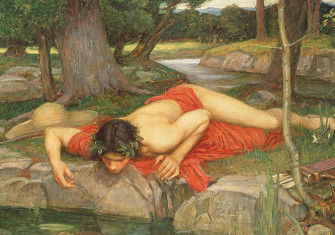St George and the Dragon
A medieval myth with deep roots that captured the imagination of western Europe’s age of chivalry.

Amid a gathering storm, St George kills a dragon with his lance, Ascalon. In doing so, he saves the life of the princess who is next in line to be sacrificed to the beast in order to keep her city safe. It is a myth with a long pedigree, in the tradition of the Greek story of Perseus and Andromeda.
George was reputed to be a Greek-born Roman soldier, a member of the third-century Emperor Diocletian’s Praetorian Guard, who was martyred, possibly in what is now the Palestinian town of Lydda, after converting to Christianity. George was venerated by both Byzantine Christians and Muslims and remains of special significance to Christian Arabs.
The dragon myth originated in Georgia – one of a number of places in which George is a patron saint. It was popularised in western Europe in the 13th century by Jacobus da Varagine, Archbishop of Genoa (whose patron saint is also George), in his book, The Golden Legend. That became a bestseller when translated into English and published by William Caxton in the 15th century. By then, George had become the patron saint of England, replacing St Edmund the Martyr: in 1348 Edward III had chosen the warrior-saint as patron of the Order of the Garter. Jean Froissart in his Chronicles records that English soldiers often invoked George during the battles of the Hundred Years War. The feast day of St George, 23 April, survived the culls of the English Reformation and the day gathered greater resonance as the traditional birthday – and death day – of William Shakespeare.
Saint George and the Dragon by the Gothic Late Renaissance painter Paolo Uccello is arguably the best-known work on the theme. His idiosyncratic style was marked by a concern for perspective that owed much to his training as a mathematician. It hangs in the National Gallery.






